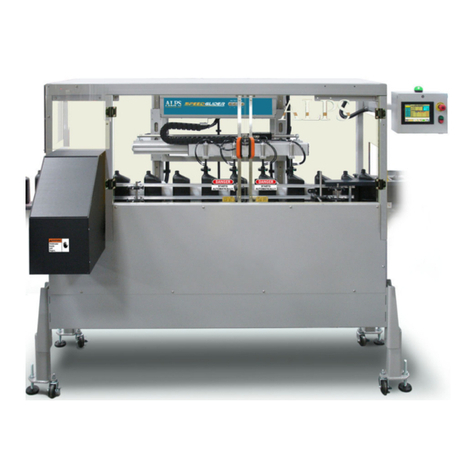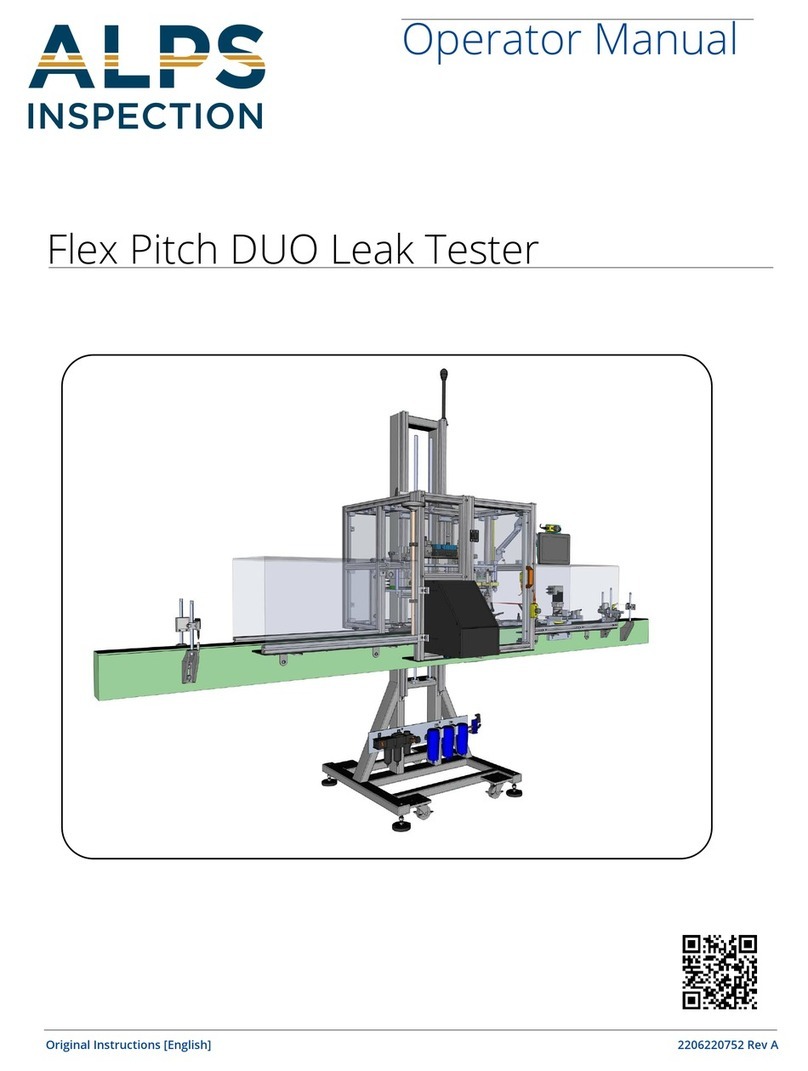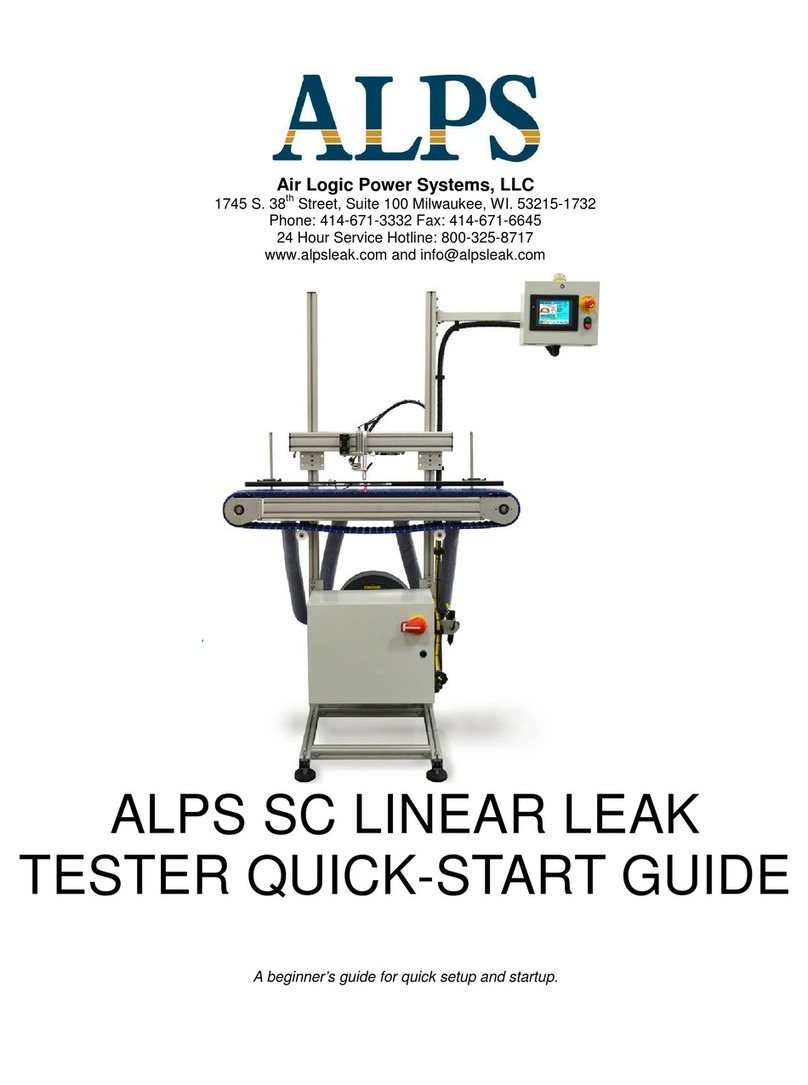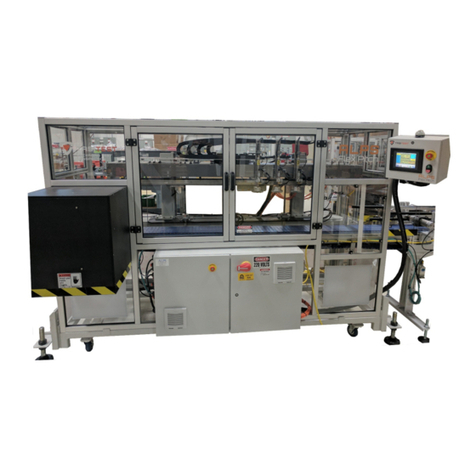
AIR LOGIC POWER SYSTEMS (ALPS) NOTICES
The Settings Menu 20
Settings Introduction............................................................................................................................................20
Test Pressures & Reject Limits Introduction .......................................................................................................20
Test Timers, Reject Limits & Test Pressures Navigation and Use......................................................................22
Probe Take Off Introduction ................................................................................................................................23
Probe Take Off Navigation and Use....................................................................................................................24
3 and 4 Head Probe Alignment .......................................................................................................................... 24
Container at test Photo Eye Alignment .............................................................................................................. 24
Recipes Introduction............................................................................................................................................27
Saving and Deleting Existing Recipes.................................................................................................................27
Creating a New Recipe........................................................................................................................................28
Load Recipe to Memory Card..............................................................................................................................29
Load Recipe from Memory Card to HMI..............................................................................................................30
Reject Timing Introduction...................................................................................................................................32
Reject Timing Navigation.....................................................................................................................................32
Machine Speeds Introduction..............................................................................................................................33
Speed Mode Description Table...........................................................................................................................33
Machine Speed Navigation and Information help Screens.................................................................................34
Photo Eye Settings Introduction..........................................................................................................................36
Photo Eye Settings Navigation............................................................................................................................36
Test Results Menu 37
Test Results Introduction.....................................................................................................................................37
Test Result Descritption Table ............................................................................................................................37
Last Test Detail Navigation..................................................................................................................................39
Last Detail Timers Navigation .............................................................................................................................39
Counters Navigation............................................................................................................................................39
Recent Rejects Navigation..................................................................................................................................40
Alarms Counters Navigation................................................................................................................................40
Alarm Log Navigation..........................................................................................................................................40
Maintenance Menu 41
Manual Test.........................................................................................................................................................41
Manual Test Display Description.........................................................................................................................42
Manual Test Navigation.......................................................................................................................................44
Input and Output Diagnostics..............................................................................................................................45
Input Diagnostics Navigation...............................................................................................................................45
About ...................................................................................................................................................................45
Supervisor Menu Introduction46
Supervisor Screen Flow and Navigation .............................................................................................................47
Supervisor Information Help Screens..................................................................................................................47
Container Change Over and Setup 48
Change Over Steps Overview.............................................................................................................................48
Change Over Steps Guide ..................................................................................................................................48
New Container Setup Guide for Test Settings ....................................................................................................52



































